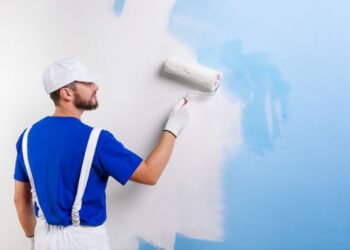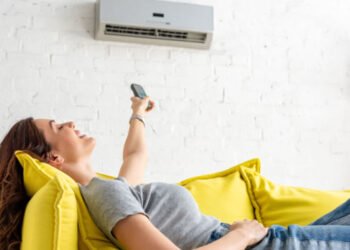Commercial deck waterproofing is crucial for maintaining and extending the lifespan of outdoor structures. Whether it’s a rooftop patio, a balcony, or a pool deck, waterproofing protects against moisture damage, mold growth, and structural deterioration. We’ll delve into the importance of commercial deck waterproofing, explore different methods and materials, and discuss installation processes, maintenance tips, and cost considerations.
Diving Deep: A Comprehensive Guide to Commercial Deck Waterproofing
Why Waterproofing Matters
Waterproofing is essential for commercial decks due to their exposure to the elements. Rain, snow, and humidity can seep into unprotected surfaces, causing issues like wood rot, corrosion of metal components, and deterioration of concrete. These problems not only compromise the deck’s aesthetic appeal but also pose safety hazards to occupants. Waterproofing mitigates these risks, ensuring the deck’s structural integrity and enhancing its longevity.
Types of Waterproofing Systems
Liquid Membrane Systems (LMS)
Liquid membrane systems (LMS) are famous for their versatility and ease of application. They consist of liquid coatings applied directly onto the deck surface, forming a seamless, watertight barrier. LMS can be used on various substrates, including concrete, wood, and metal. These systems often use additives such as fibers or reinforcement materials to enhance durability and UV-reight resistance.
One advantage of LMS is its ability to conform to complex shapes and details, making it suitable for irregularly shaped decks or areas with intricate features. However, proper surface preparation and application techniques are crucial to ensure optimal performance and longevity.
Sheet Membrane Systems
Sheet membrane systems involve the installation of pre-manufactured membranes onto the deck substrate. These membranes, typically made of materials like modified bitumen, PVC, or EPDM (ethylene propylene diene monomer), offer excellent waterproofing properties and are highly durable.
Installation of sheet membranes involves careful preparation of the substrate, followed by applying adhesives or mechanical fasteners to secure the membrane. Seams and joints are then sealed to create a continuous waterproofing barrier. Sheet membrane systems are known for their resistance to punctures and abrasions, making them suitable for high-traffic commercial decks.
Cementitious Waterproofing
Cementitious waterproofing products are cement-based coatings that are applied as a slurry or paste onto the deck surface. These products contain additives like polymers or acrylics to improve flexibility and water resistance. Cementitious waterproofing is often used on concrete decks or structures due to its compatibility with concrete substrates.
The application process involves mixing the waterproofing material with water to form a uniform consistency, which is then applied using a brush, roller, or spray equipment. Multiple coats may be required to achieve the desired thickness and durability. While cementitious waterproofing is cost-effective and provides good protection, it may require periodic maintenance and reapplication.
Installation Process
The installation process for commercial deck waterproofing varies depending on the chosen system. However, specific steps are common across most waterproofing methods:
Surface Preparation: Proper surface preparation is crucial for ensuring the waterproofing system’s adhesion and longevity. This includes cleaning the surface to remove dirt, debris, and contaminants, repairing any cracks or damaged areas, and ensuring a smooth, dry substrate.
Primer Application: A primer or bonding agent is often applied to the prepared surface to enhance adhesion between the substrate and the waterproofing material. The type of primer used depends on the specific waterproofing system being installed.
Waterproofing Material Application: The waterproofing material, whether a liquid membrane, sheet membrane, or cementitious coating, is applied according to the manufacturer’s instructions. Depending on the system, this may involve spraying, rolling, troweling, or torching.
Seam and Joint Sealing: Seams, joints, and transitions between different materials are critical areas that require special attention. To maintain the integrity of the waterproofing barrier, these areas are typically sealed using compatible sealants or tapes.
Curing and Inspection: After applying the waterproofing material, it needs sufficient time to cure and form a durable, watertight seal. Proper curing conditions, such as temperature and humidity levels, are essential. Once cured, the waterproofing system is inspected for any defects or areas that may require touch-ups.
Maintenance and Care
Proper maintenance is critical to extending the lifespan of a commercial deck waterproofing system. Here are some maintenance tips to consider:
Regular Inspections: Conduct periodic inspections of the deck surface for signs of wear, damage, or water penetration. Address any issues promptly to prevent further damage.
Cleaning: Clean the deck surface by regularly removing debris, dirt, and organic materials. Use mild cleaners or detergents as recommended by the waterproofing manufacturer.
Sealing and Repairs: Monitor seams, joints, and penetrations for signs of wear or deterioration. Seal any cracks or gaps promptly to maintain the waterproofing integrity.
Surface Protection: Consider using protective coatings or sealants to enhance the waterproofing system’s durability and UV resistance.
Professional Maintenance: Schedule periodic professional inspections and maintenance by certified waterproofing contractors, such as CAPITAL DECK AND STAIR WATERPROOFING serving Los Angeles, to ensure optimal performance and identify potential issues early.
Cost Considerations
The cost of commercial deck waterproofing depends on various factors, including the deck size, chosen system, labor costs, and any additional preparations or repairs required. Liquid membrane systems may generally be more cost-effective for smaller decks or areas with complex shapes. In comparison, sheet membrane systems or cementitious coatings suit larger decks or high-traffic areas.
It’s essential to obtain detailed quotes from reputable waterproofing contractors and consider the long-term benefits of investing in a quality waterproofing system. While initial costs may vary, a well-installed and maintained waterproofing system can save money in the long run by preventing costly repairs and extending the deck’s lifespan.
Commercial deck waterproofing is critical in protecting outdoor structures from moisture damage and ensuring long-term durability. By understanding the different waterproofing systems, the installation process, maintenance requirements, and cost considerations, property owners and managers can make informed decisions to preserve the integrity and functionality of their commercial decks. Regular inspections, proper maintenance, and professional expertise are critical factors in maximizing the performance and lifespan of waterproofing systems, ultimately contributing to a safe, aesthetically pleasing, and durable outdoor environment.












